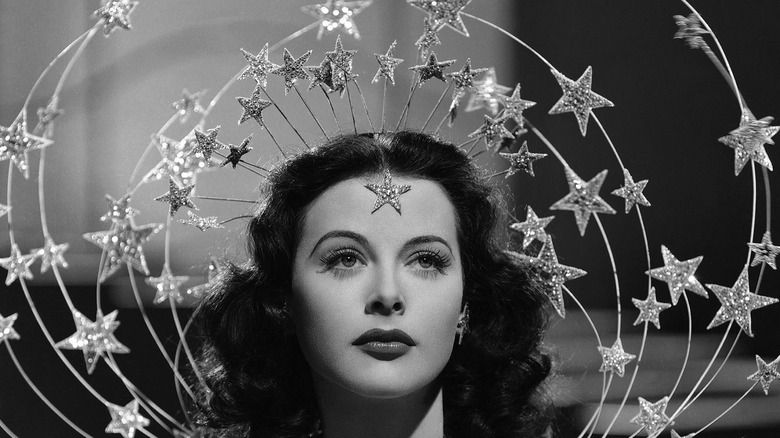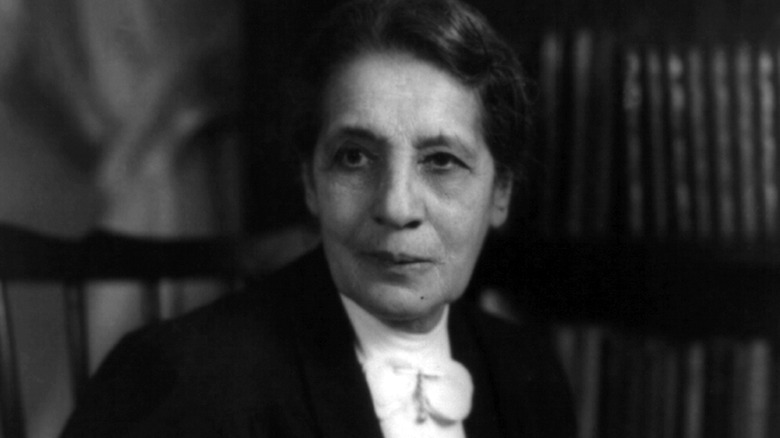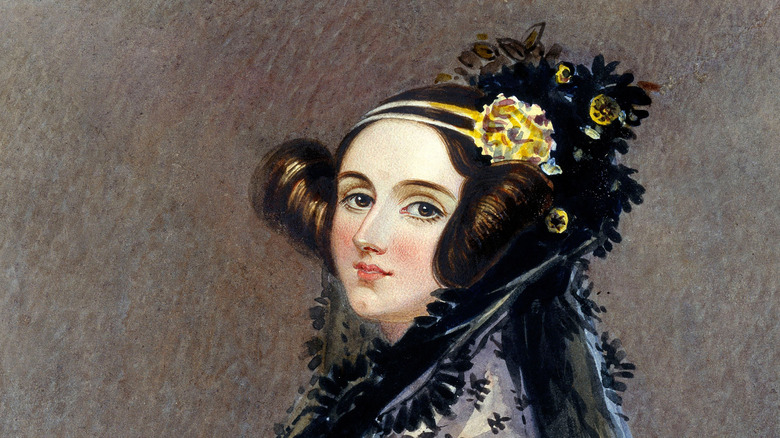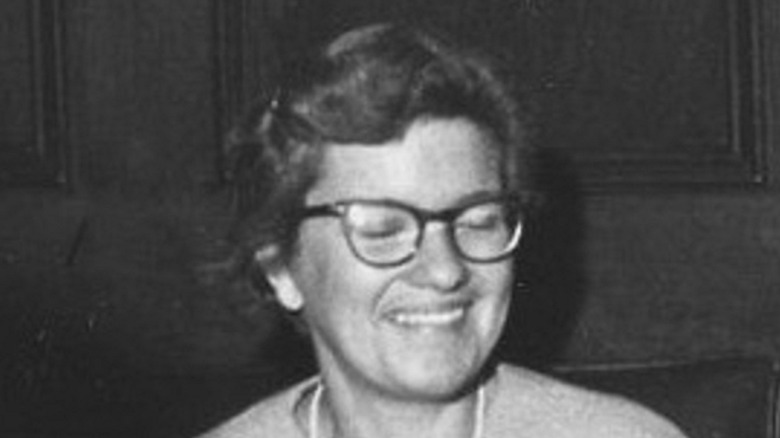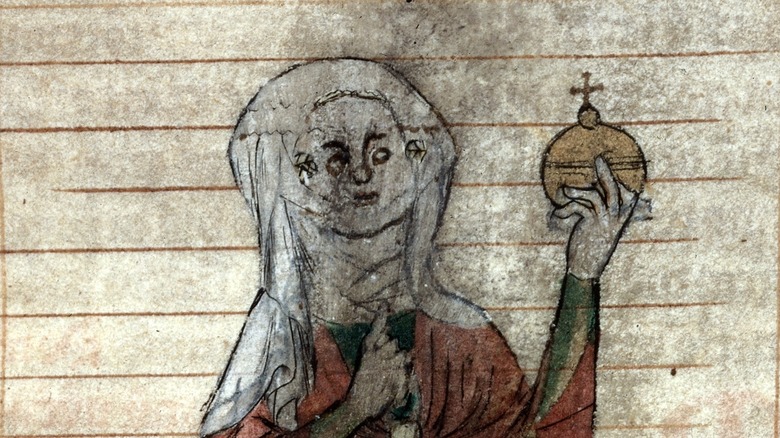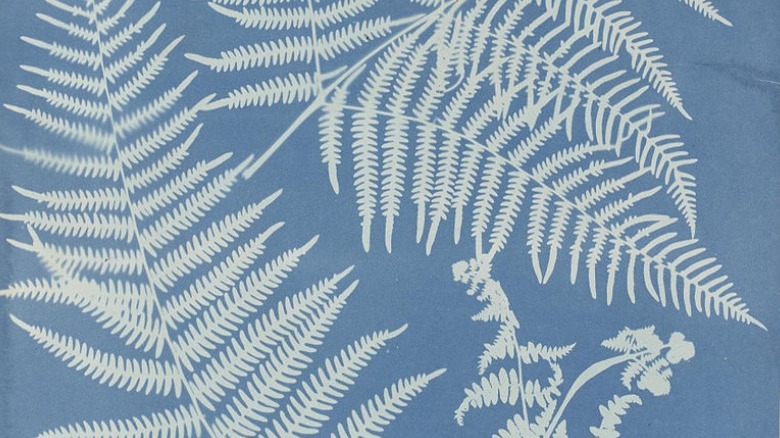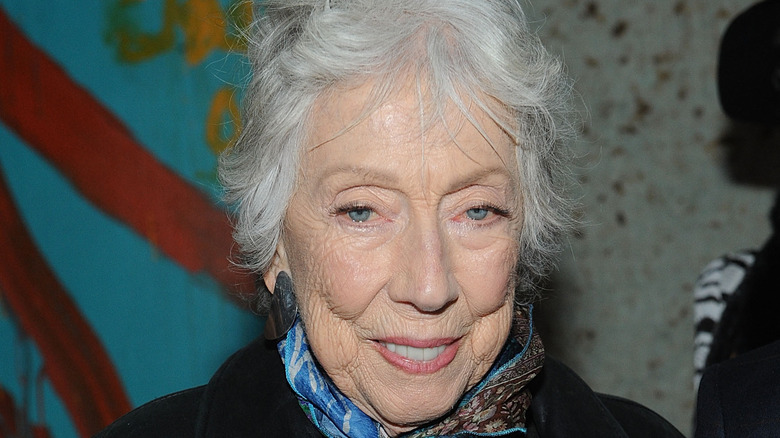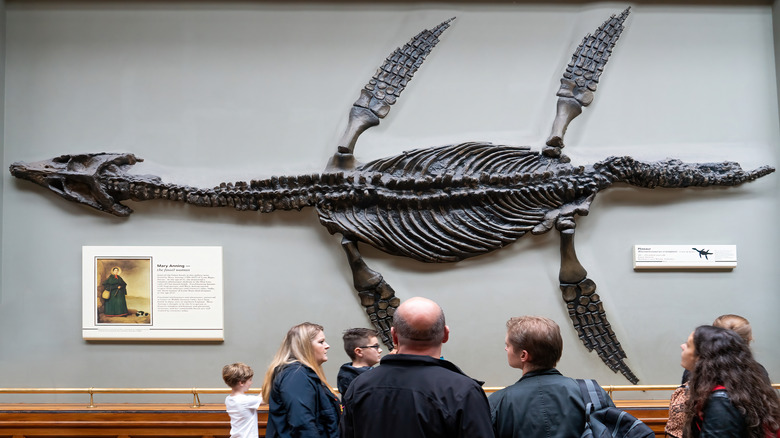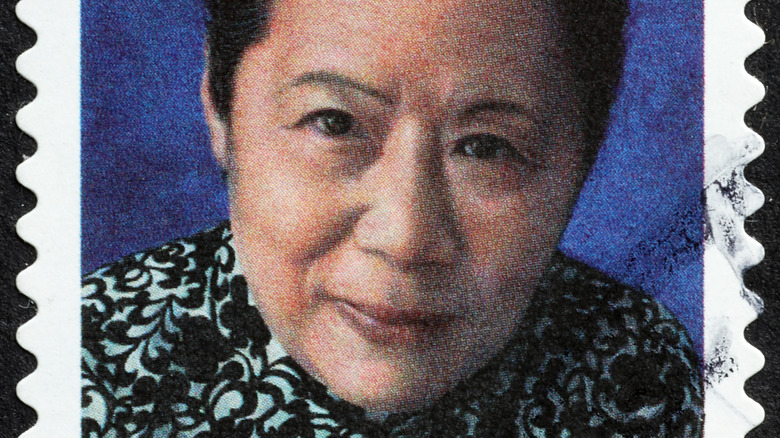Inventions And Discoveries By Women That Men Took Credit For
Although you'd think historical facts would recognize different genders equally, history tends to show itself through a distorted lens of ideology and social power relations. Women, as "the second sex" according to the French feminist Simone de Beauvoir, regardless of their achievements and contributions, were rarely mentioned as equal members of society: "Representation of the world, like the world itself, is the work of men; they describe it from their own point of view, which they confuse with absolute truth."
While many women didn't even have a slight chance of gaining an adequate education or work experience to produce something significant, some of them were lucky. They had means, support, and a strong character to be able to work in the fields that historically belonged to men -– paving the way for many women behind them. But their brilliant accomplishments often went unnoticed. Even more often, they were credited to men, for various reasons.
Here is the list of inventions and discoveries by women that men took credit for.
Wireless communication
According to the National Women's History Museum, Hedy Lamarr wasn't just a successful actress, but also a relentless inventor. Born in Vienna in 1914, she spent a great deal of time with her father, who taught her the basics of engineering. Despite her interest in machinery from a young age, she became an actress when she was only 16, discovered by director Max Reinhardt.
As per Smithsonian Magazine, she fled to the U.S. during World War II, and in 1940, she met George Antheil, a music producer and a fellow innovator. Together, they started to develop a communication system for torpedo guidance, based on the use of "frequency hopping" among radio waves. They presented the idea to the U.S. Armed Forces, but they rejected it saying it was inconvenient and awkward. When lightweight transistors were available by the mid 1950s, the Navy used Lamarr's concept and gave it to the contractor who was developing a sonobuoy — without compensating Lamarr for her contribution — despite the fact that the concept of frequency hopping was patented by Antheil and Lamarr until 1959. The idea of torpedo guidance as Lamarr created it was even used in a war setting in the 1962 Cuban Missile Crisis.
According to Lamarr's biographer Stephen Michael Shearer, "Possibly the invention was shelved because Lamarr was considered the most beautiful girl in the world and we must keep in mind that, at the time, nobody took a beautiful woman seriously regarding intellectual matters" (via BBVA Open Mind).
Nuclear fission and the Auger effect
According to Atomic Heritage, Lise Meitner was an Austrian physicist born in 1878. She was the second woman who obtained a doctorate degree from the University in Vienna before she went on to study with physicist Max Planck.
As reported by Magellan TV, Meitner experienced the weight of her gender on many occasions. In 1922, Meitner was the first person who described electron behavior and how it releases energy. But another scientist, French physicist Pierre Auger, came to the same conclusions in his Ph.D. thesis a year later, so the idea was ascribed to him and called the "Auger effect." She didn't even receive any money for her work until she was 35 and the first female professor in Germany.
But that wasn't the only time Meitner was snubbed. Partnering with chemist Otto Hahn, Meitner created a theoretical foundation for the splitting of the uranium atom, which she named fission. Despite her massive contribution, she wasn't allowed to enter Hahn's laboratory, open only to men, but had an improvised space in the basement of the building. When Hahn published their discoveries on fission in 1942, her name was never mentioned (some believe this was also due to Meitner's Jewish origin). In 1944, only Hahn received the Nobel Prize. When the idea of a fission process was picked up by The Manhattan Project, Meitner refused to participate: "I will have nothing to do with a bomb!" (via RTE). For the rest of her life, she felt guilt for the contribution she and other scientists had in the destruction created in Hiroshima and Nagasaki.
The concept of a computer program
According to New Scientist, Ada Lovelace had fame in her genes -– a daughter of the poet Lord Byron and mathematician Annabella Milbanke, she received a quality education in science since her early childhood.
Per an article published in Patterns, she worked with Professor Charles Babbage, who was a recognized mathematician and mechanical engineer. When Babbage decided to publish his concept of an analytical engine, "Sketch of Charles Babbage's Analytical Engine," Lovelace translated the text into English and expanded his conclusions. While Babbage (and everyone else at the time) thought the computer could only calculate numbers, she proposed a radical idea: that machine could also manipulate symbols. By writing instructions for the machine, she created the first known computer program: an algorithm to calculate Bernoulli numbers.
She died young and severely sick, and Babbage ran out of money; the machine was never built, and her idea of the computer program existed only on paper. The idea was so radical, it got picked up 90 years later by Alan Turing. But, by the end of the 20th century, a controversy emerged, as many biographers and history researchers claimed that Lovelace was far off from being capable of inventing something so innovative, and the idea of her being "a mother of modern computing" was an insult to Babbage, the real inventor. Christopher Hollings, Ursula Martin, and Adrian Rice thoroughly researched this topic and concluded that the ambition she expressed in her papers was entirely credible. She was the person who invented Bernoulli algorithm after all.
Monopoly
According to Lemelson Centre for the Study of Invention and Innovation, Elizabeth Magie Phillips was an avid inventor and a critical thinker. She improved a typewriter by upgrading the existing machine and its paper rollers to move paper more swiftly. Her interest in economical sciences led her to anti-monopolist theories of Henry George, and this knowledge inspired her to create The Landlord's Game.
But The Landlord's Game wasn't just for fun: "the object of the game is not only to afford amusement to the players, but to illustrate to them how under the present or prevailing system of land tenure, the landlord has an advantage over other enterprises and also how the single tax would discourage land speculation."
Although Phillips patented the board game in 1924, Charles Darrow copied the idea and sold it to Parker Brothers company in 1935, earning millions. Parker Brothers promoted the game as if the idea for Monopoly came from a poor salesman who created the game out of necessity to survive during the Depression -– Darrow himself. Parkers Brothers still insist on their version of the story today. According to former Parker Brothers executive Phil Orbanes, Phillips did get paid fairly ($500) for the rights to her Landlord's Game, and, apparently, "Game inventors just didn't get that in 1935; she died in 1948, and up and through during her entire lifetime she and Darrow were given joint credit for the idea behind Monopoly. After she passed away, then, yes, she was forgotten" (via CBS News).
The existence of dark matter
Throughout Vera Rubin's early career, her work was seen as controversial and was widely ignored (via Space), and she dealt with a fair amount of sexism in her field. Her application to Princeton was rejected solely because she was a woman, so she studied at Cornell and Georgetown instead. Becoming the first woman who was allowed into the Palomar Observatory, she painted an image of a woman on the door of the only toilet, labelled "MEN."
According to the American Museum of Natural History, she started to observe the dynamics of galaxies during her time as a researcher at the Carnegie Institution in Washington. She started to collaborate with astronomer Kent Ford. Together, they researched the orbital speeds of the stars to calculate how the mass is distributed in the galaxy. But Rubin focused on the opposite of what was expected, and with the data she gathered, she presented the first documentation of dark matter, which had existed only as a vague theoretical by Fritz Zwicky until then. Per Physics World, it took more than 10 years for Rubin to convince her fellow scientists, since the majority of them rejected her thesis or, in the best case, simply ignored her.
Although her contribution to science resulted in a massive paradigm shift in physics, she received her first awards very late in life and was never given a Nobel Prize. Zwicky on the other hand, was much more successful, receiving a Gold Medal of the Royal Astronomical Society in 1972 for his discovery of dark matter, among others. They even named an asteroid after him: 1803 Zwicky.
Gynaecology
According to Brooklyn Museum, Trotula of Salerno (sometimes Trotula of Ruggerio) worked as an 11th-century doctor and lecturer in Salermo, Italy. She focused her career on female reproductive health and hygiene, discovering many specific reproductive issues from conception to birth. She was a strong believer in the usage of opiates during the last stages of labour, rejecting the Christian idea of a birth pains serving as a punishment for original sin. She was the first scientist who publicly questioned male fertility; until then, issues with fertility were seen as an exclusively female problem.
She thoroughly documented all of her discoveries, which resulted in a 63-chapter book, "Passionibus Mulierum Curandorum" (or, "The Diseases of Women"). The book, for a long time the only source of knowledge about female health and body, heavily influenced medical practices throughout the pre-modern period.
But no later than in Renaissance, certain male academics started to doubt the origins of the text, claiming the Trotula was a fictional character, and the book was actually written by a man named Trottus. Some investigation into who is the real author still endures today, and some speculate that the book could be a result of different writers, not just one.
The first opiate brain receptor
According to the Los Angeles Times, Dr. Candace Pert discovered her interest in opiates when she had a brief encounter with them during her recovery from a riding accident when she was still at Johns Hopkins University. Her mentor, neuroscientist Solomon H. Snyder, forbade her from doing any research into morphine's means of working, but she did it anyway, while also taking care of her 5-year-old son. She managed to identify the first opiate receptor in the brain. Snyder took most of the credit for the discovery, receiving the Lasker Award in 1978, sharing it with others. Pert was excluded, however, and even wrote an angry letter to the journal Science, stating her work played a key role in the research.
Per Science, what hurt Pert was the fact that John Hughes, Hans Kosterlitz's assistant, was included in the award, but not her. It is true that he was an independent researcher while she was a graduate student at the time, and, as is common in the academia, professors are often credited solely for their success. Pert claims she started to think about the project long before she met Snyder and insists that the idea was hers, while Snyder publicly stated he was trying to secure a grant for this research a year before she joined the team. It is true that Pert is the first author of the papers, which are often ascribed to Snyder, and even Snyder himself appealed to the Lasker Award committee to reconsider their decision, mentioning that they both deserve recognition.
The first photo book
Per Natural History Museum, Anna Atkins, born in 1799 in England, was one of the few lucky women of that time who had access to science and education. Her father John George Children was the first president of the Royal Entomological Society of London, which enabled her to dive deep into the world of botany. She became a skilled illustrator first, creating more than 250 scientifically accurate drawings of shells.
After meeting William Henry Fox Talbot, she became interested in photography, specifically the cyanotype process. According to Aperture, she printed around 6,000 cyanotype phonogram exposures to create 14 copies of "Photographs of British Algae: Cyanotype Impressions" (1843–53), the first book in history made only out of photographs. Her approach was part artistic, part scientific -– diligently labelling every type of algae with its Latin name, the book gave the impression of a catalog.
But it was only in the late 20th century that Atkins got any credit for her work. William Henry Fox Talbot's "The Pencil of Nature" (1844–46) was regarded as the first photographically illustrated book until the 1990s. Atkins' work was attributed to John Herschel, a man who discovered the chemicals for a dark room process (and who was given Atkins' book as a gift). Sometimes her initials were read as Anonymous Amateur. Many times, her work was ignored. Some claim the reason for this is the fact that Atkins' book wasn't published commercially, but only as a gift to her friends, unlike Talbot's, which was created with the intention of selling (via Los Angeles Times).
The big-eyed waifs
According to The Vintage News, Margaret Keane's story is an intense one. She met Walter Keane in 1955, marrying him soon after. She worked as a professional painter at the time, inventing the "Big Eyes" style, portraying children with enormous, sad eyes. Walter claimed to be a painter too, selling paintings of Parisian neighborhoods. He convinced Margaret it would be better if he sold her paintings, and with her being shy, she didn't resist.
As reported by The Guardian, the paintings were soon a huge success. But when she discovered her husband was selling the paintings as his own, she was shocked, demanding him to stop. Walter resisted, insisting revealing the truth would hurt their income and reputation. Margaret was devastated but agreed to continue, painting for 16 hours per day while he led his lavish lifestyle. She spent days in her studio, not having any contact with the outside world: "He wouldn't allow me to have any friends ... He was very jealous and domineering. And all along he said: 'If you ever tell anyone I'm going to have you knocked off.'"
Eventually, the dispute ended in court, with both sides trying to prove they were the inventors of the popular "Big Eyes" technique. A judge demanded from both of them to paint a painting in 60 minutes. She proved her point and was entitled to a $4 million compensation, which she never saw because he spent all their money. Nevertheless, she is now recognized as the sole author of the "Big Eyes" opus.
Dinosaur fossils
According to the Natural History Museum, Mary Anning grew up in Dorset, England, in a very modest household. Her father was an amateur fossil hunter, so despite having very little education, she did know a thing or two about fossils. To help her family to pay bills, she spent many days on the beach, looking for ammonites and belemnites, which sold well to tourists. But, in 1811, she (being only 12) and her brother found a 17-foot-long skeleton of an ichthyosaur, a strange creature no one had ever seen before.
Anning's fascinating discoveries continued; in 1823, she found another monster, a skeleton of a plesiosaurus this time. Many speculated the fossil was fake, due to its peculiar structure. Georges Cuvier — father of paleontology and the creator of the theory of extinction — himself claimed something like this is impossible, although he admitted his mistake later on.
But, as professor Richard Herrington, Head of Earth Sciences at the Museum, states, "Despite her discoveries being some of the most significant geological finds of all time, for a long period she was overlooked by the history books." Despite her vast knowledge and discoveries, she was excluded by the scientific community for being a woman, the Geological Society of London refused her a membership, and many of her findings were presented under names of men who bought the fossils off her.
Disproving the law of parity
Per the National Women's History Museum, physicist Dr. Chien-Shiung Wu has a pretty impressive resume. She finished her Ph. D. at the University of California, Berkeley, and became the first female instructor at the physics department at Princeton University. Wu's ground-breaking research in uranium separating process was conducted under the Manhattan Project, and she contributed to the discovery of separation of uranium and isotopes by gas diffusion, the main concept behind the atomic bomb. But she also overthrew the law of symmetry in physics, called the principle of conservation of parity.
According to Women You Should Know, when two theoretical physicists, Tsung Dao Lee and Chen Ning Yang, asked her to conduct a nearly impossible experiment which would prove their theoretical work, she agreed. She built the machine and succeeded, overthrowing the theory of parity conservation and proving Lee's and Yang's radical hypothesis. Both men received the Nobel Prize in 1958 for their scientific paper, while her contribution was completely omitted. She never received the Nobel Prize. Still, today the experiment is often referred as the "Wu experiment."
That wasn't the only time her contributions went unnoticed. In 1962, she conducted another experiment, this time proving the theory of Murray Gell-Mann and Richard Feynman, claiming that "a universal theory united muonic decay and beta decay." Not surprisingly, both men were awarded the Nobel Prize — not Chien-Shiung Wu though. She ultimately went on to fight for women in STEM industries relentlessly until her death in 1997.

